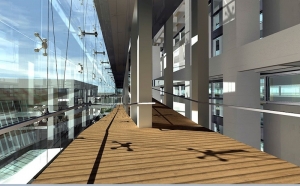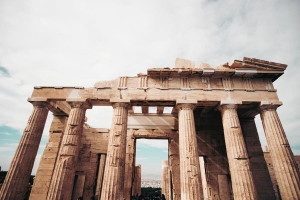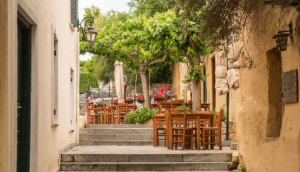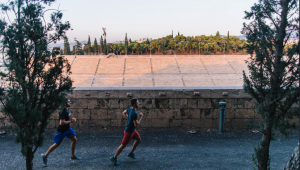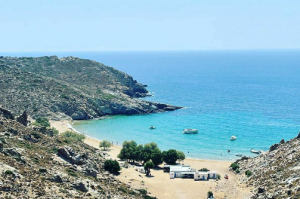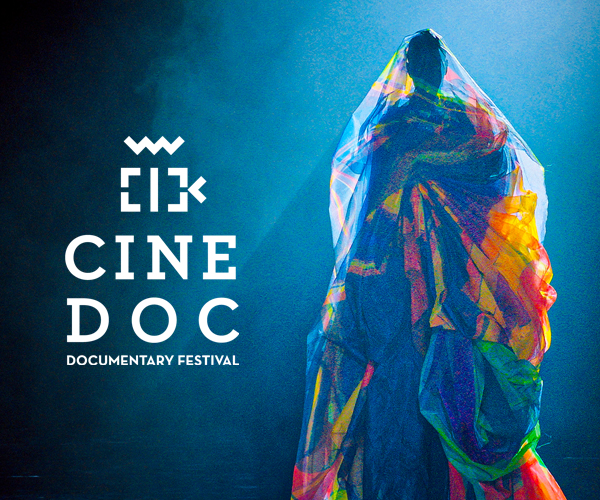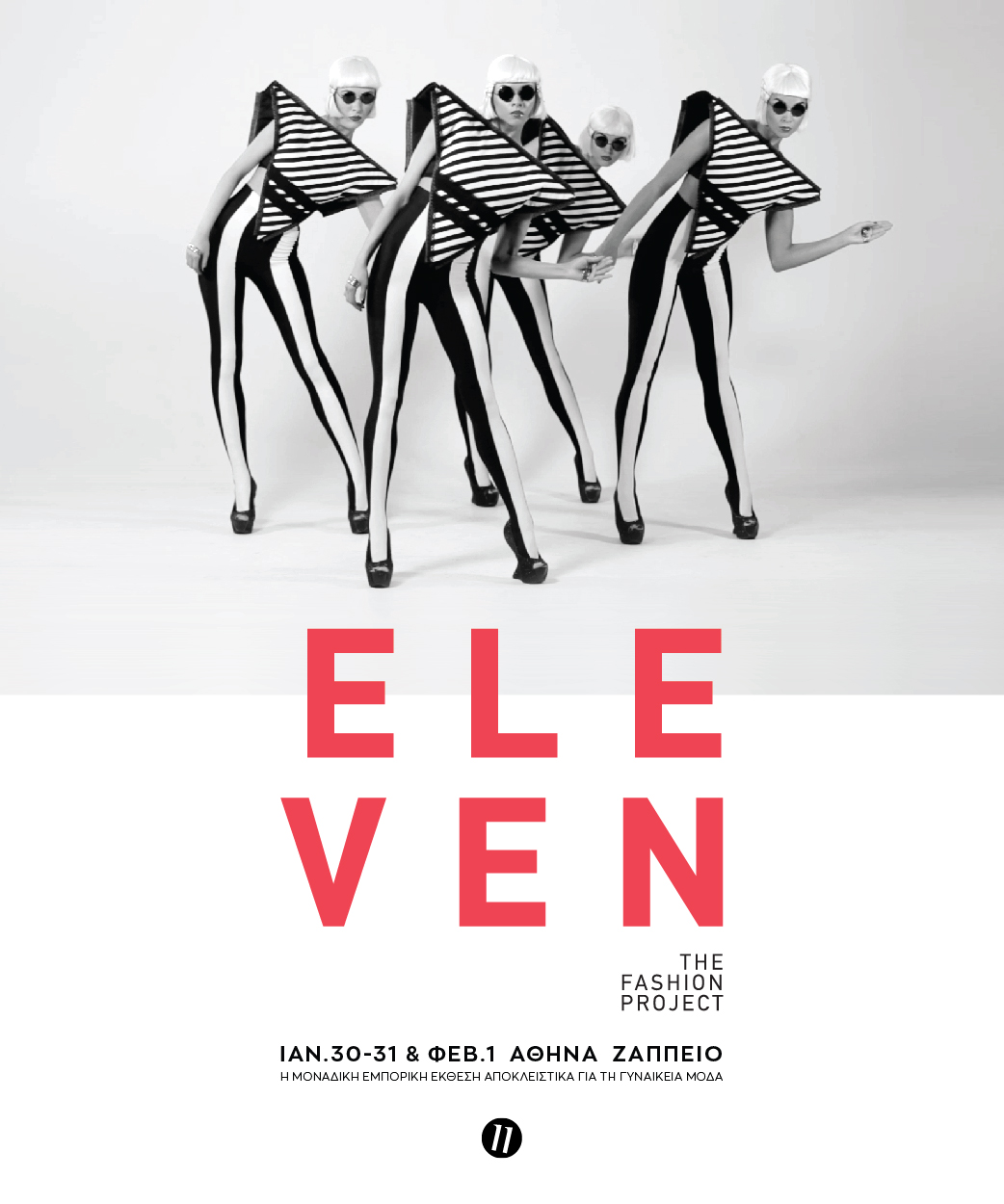XpatAthens
Monday, 10 July 2017 07:00
National Gallery In Athens To Be Completed In Early 2019
The expansion and modernization project of the National Gallery – Alexandros Soutzos Museum (EPMAS) in Athens is expected to be completed in early 2019, with a grant by the Stavros Niarchos Foundation (SNF), totaling 13 million euros.
The new grant will lead to the completion of the gallery’s building B, which will be named “Stavros Niarchos Foundation Wing of the National Gallery – Alexandros Soutzos Museum” and will host permanent painting collections.
“We are happy to collaborate with the Ministry of Culture, EPMAS and the Region of Attica to complete the expansion of the National Gallery, a project which is expected to place it on a prominent position, on the map of international cultural organizations,” said the co-president of the Stavros Niarchos Foundation Andreas Dracopoulos.
To read this article in full, please visit: Greek Travel Pages
Photo Credit: Greek Travel Pages
Photo Credit: Greek Travel Pages
Published in
Local News
Tagged under
Wednesday, 11 April 2018 16:45
April 10th - Noteworthy News & Updates
It looks like summer is getting closer! From travelers flying in to Athens reaching significant numbers already, to the Onassis Foundation offering scholarships and helping children with Autism learn all about them in this week's newsletter!
Please click HERE to view this issue of our newsletter!
Published in
Newsletters
Tagged under
Tuesday, 11 May 2021 07:00
5 Of The Best Garden Restaurants In Athens
Whatever your preference in food and drinks, these restaurants in Athens serve a variety of meze-style dishes in beautiful courtyards and gardens, perfect for a quick meal and a relaxing evening with friends.
Pyroliki
This garden restaurant in Metaxourgeio offers traditional Greek food with a twist. Friendly and cozy ambiance, an atmospheric backyard, and flavors from all over Greece will travel your mind to Crete and the Greek islands. Start with delicious seafood appetizers along with a glass of ouzo, wine, or Cretan raki, and continue your meal with typical Greek dishes!
This garden restaurant in Metaxourgeio offers traditional Greek food with a twist. Friendly and cozy ambiance, an atmospheric backyard, and flavors from all over Greece will travel your mind to Crete and the Greek islands. Start with delicious seafood appetizers along with a glass of ouzo, wine, or Cretan raki, and continue your meal with typical Greek dishes!
Location: 117 Megalou Alexandrou, Metaxourgeio
Telephone: 210 3420293
Telephone: 210 3420293
Rozalia
Rozalia is a great option for dinner in the Exarcheia neighborhood of Athens. It is a family-run taverna that serves grills and home-style fare. The dishes are brought around on a tray, so you can see, point and pick! Its distinctive character and beautiful garden make it an ideal destination.
Location: Valtetsiou 59, Exarcheia
Telephone: 210 3802725
Metaxou
Metaxou will make you feel just like home! Enjoy their delicious traditional greek appetizers, such as cheese pies, revithokeftedes, soutzoukakia, wine from the island of Ikaria, and occasionally live music.
Metaxou
Metaxou will make you feel just like home! Enjoy their delicious traditional greek appetizers, such as cheese pies, revithokeftedes, soutzoukakia, wine from the island of Ikaria, and occasionally live music.
Location: 10 Pithodorou, Metaxourgeio
Telephone: 210 5229290
Kouvelos
Located in the area of Koukaki, Kouvelos serves traditional Greek food in a romantic garden. Start with the deep-fried cheese pie, a specialty from Skopelos island, and end your meal with homemade hazelnut liqueur.
Location: Genneou Kolokotroni 66, Athina
Telephone: 211 4052418
Located in the area of Koukaki, Kouvelos serves traditional Greek food in a romantic garden. Start with the deep-fried cheese pie, a specialty from Skopelos island, and end your meal with homemade hazelnut liqueur.
Location: Genneou Kolokotroni 66, Athina
Telephone: 211 4052418
Karderina
This garden in the area of Petralona attracts many Athenians and foreigners for its exceptional greek food and mezes, its famous tsipouro, and, of course, its affordable prices!
Location: 67 Kallisthenous, Ano Petralona
Telephone: 210 3454000
Published in
Restaurants In Athens
Tagged under
Monday, 24 September 2018 07:00
Matthew McConaughey On Jimmy Fallon - "I Didn't Want To Leave Greece"
Hollywood movie star and heart-throb, Matthew McConaughey, recently appeared on Jimmy Fallon's 'The Tonight Show' to promote his new film called 'White Boy Rick.' While they did talk about the film, what caught our attention was his mention of his love for Greece!
McConaughey and his family, including his mother, father-in-law, wife, and kids, as well as Woody Harrelson's family, recently spent 3 weeks in a house in Antiparos this summer, relishing the Greek lifestyle. In the funny clip below, McConaughey tells Fallon about how his family loved Greece so much, that they decided to extend their holiday. However, when his mom was prepared to leave as planned, it didn't take too much convincing for her to stay!
Published in
Videos
Tagged under
Monday, 23 March 2020 07:00
Tracking The Spread Of Covid-19 In Greece
In response to the need to quickly map the spread of the new coronavirus in Greece, post-graduate students from the National and Kapodistrian University of Athens have created an application for the general public to quickly and easily report their symptoms.
If You Have Symptoms - Here's What To Do
Only complete this online survey if you have experienced any COVID-19 symptoms and allow your device to share your location. The process takes less than a minute and your responsible response can help map confirmed and presumptive cases of COVID-19 in Greece.
The tracking system was developed as part of the MSc program "Environmental, Disaster, and Crisis Management Strategies."
If You Have Symptoms - Here's What To Do
Only complete this online survey if you have experienced any COVID-19 symptoms and allow your device to share your location. The process takes less than a minute and your responsible response can help map confirmed and presumptive cases of COVID-19 in Greece.
The tracking system was developed as part of the MSc program "Environmental, Disaster, and Crisis Management Strategies."
Published in
Local News
Tagged under
Monday, 12 April 2021 00:46
Running Routes In Athens That'll Get You Sightseeing Too!
Athens has surprisingly good running routes. Not just because of their beautiful locations, often surrounded by antiquities, but also due to their relative calm.
In the winter, you could be running in Athens’ “Central Park” of Philopappou, right below the Acropolis, with the historic hill all to yourself. What a treat!
In the winter, you could be running in Athens’ “Central Park” of Philopappou, right below the Acropolis, with the historic hill all to yourself. What a treat!
Panathenaic Stadium
One of Athens’ best-kept secrets, this 500 metre racetrack on the rim of the Panathenaic marble stadium (home of the first modern-day Olympic Games) boasts some of the city’s most spectacular views. Accessible only from the rear, through a green gate on Archimidous Street, it is very much open and free to use, as long as you don’t enter the actual stadium. Although this wonderful track can get crowded in the afternoons, it is very quiet in the mornings and truly magical to run along, taking in the views of the Acropolis, Lycabettus Hill, and the glowing white stadium below.
One of Athens’ best-kept secrets, this 500 metre racetrack on the rim of the Panathenaic marble stadium (home of the first modern-day Olympic Games) boasts some of the city’s most spectacular views. Accessible only from the rear, through a green gate on Archimidous Street, it is very much open and free to use, as long as you don’t enter the actual stadium. Although this wonderful track can get crowded in the afternoons, it is very quiet in the mornings and truly magical to run along, taking in the views of the Acropolis, Lycabettus Hill, and the glowing white stadium below.
Philopappou Hill
The location of choice for serious runners and probably the coolest place to jog in Athens. Imagine running all by yourself amongst wildflowers and catching cinematic glimpses of the Acropolis through clearings in the pine trees. Start at the entrance on Dionysiou Areopagitou walkway and turn left into the trees just before the church of St Demetrius. Try to follow the route to the old quarry and from there past the rock-climbing area. Meandering along the wall of rocks you will get to the landscaped stone path of Dimitris Pikionis that leads up to the monument of Philopappou on the summit. Take the opposite direction and rejoin the main path leading right. You will reach the wooden observatory and the dramatic seat of the ancient Pnyx, from where you can almost touch the Parthenon. This is what it would feel like to run in Ancient Greece (minus the sandals!).
The location of choice for serious runners and probably the coolest place to jog in Athens. Imagine running all by yourself amongst wildflowers and catching cinematic glimpses of the Acropolis through clearings in the pine trees. Start at the entrance on Dionysiou Areopagitou walkway and turn left into the trees just before the church of St Demetrius. Try to follow the route to the old quarry and from there past the rock-climbing area. Meandering along the wall of rocks you will get to the landscaped stone path of Dimitris Pikionis that leads up to the monument of Philopappou on the summit. Take the opposite direction and rejoin the main path leading right. You will reach the wooden observatory and the dramatic seat of the ancient Pnyx, from where you can almost touch the Parthenon. This is what it would feel like to run in Ancient Greece (minus the sandals!).
Laimos Vouliagmenis / Ladies Run
Ladies Run, the first and only race exclusively for women in Greece, takes place every October. It has the added perk of following a breath-taking route by the sea, along Vouliagmeni’s pine-studded Laimos peninsula. Of course, you can enjoy the same route all year round, especially if you are staying in the southern suburbs near the sea. The Ladies’ Run starts in front of Astir Beach (Athens’ most elite beach) and moves up Apollonos Street as far as the tip of the peninsula, taking in some of the scenic promenades inside the swish new Four Seasons resort. Having enjoyed the splendid views, run back in the opposite direction to the marina. Follow the Ladies Run route along the marina, past the yachting extravaganza, and then retrace your steps back to the beach.
Ladies Run, the first and only race exclusively for women in Greece, takes place every October. It has the added perk of following a breath-taking route by the sea, along Vouliagmeni’s pine-studded Laimos peninsula. Of course, you can enjoy the same route all year round, especially if you are staying in the southern suburbs near the sea. The Ladies’ Run starts in front of Astir Beach (Athens’ most elite beach) and moves up Apollonos Street as far as the tip of the peninsula, taking in some of the scenic promenades inside the swish new Four Seasons resort. Having enjoyed the splendid views, run back in the opposite direction to the marina. Follow the Ladies Run route along the marina, past the yachting extravaganza, and then retrace your steps back to the beach.
Alsos Syngrou
This large, under-visited park is on the way to the northern suburb of Kifissia (and close to the business hub of Maroussi if you are travelling to Athens for work). Apart from the fragrant pine trees that cover most of the park, Alsos Syngrou has other attractions such as a small pistachio grove, a vineyard, a theatre, a small lake, sports courts, and the city’s only Gothic Orthodox church, designed by the renowned Saxon architect Ernst Ziller. It is also a must-visit if you are training for the Athens Marathon: A full swing around the park is a tenth of the classic route, or 4.2 kilometres—ideal for clocking in long runs.
This large, under-visited park is on the way to the northern suburb of Kifissia (and close to the business hub of Maroussi if you are travelling to Athens for work). Apart from the fragrant pine trees that cover most of the park, Alsos Syngrou has other attractions such as a small pistachio grove, a vineyard, a theatre, a small lake, sports courts, and the city’s only Gothic Orthodox church, designed by the renowned Saxon architect Ernst Ziller. It is also a must-visit if you are training for the Athens Marathon: A full swing around the park is a tenth of the classic route, or 4.2 kilometres—ideal for clocking in long runs.
National Garden
Your best bet for an easy run in the city centre, especially if you are staying around Syntagma and Kolonaki. The National Garden has many paths that are clearly mapped near each entrance. Attractions include ancient Greek columns, a Roman mosaic, rare century-old trees from around the globe, and a small animal enclosure. The best thing about running in the National Garden, apart from the downtown location, is that you never get bored with the routes on offer: an abundance of promenades, alleys, cul-de-sacs and lawns for stretching guarantee variety, though the layout is not ideal for those craving speed.
This content was originally published on This Is Athens
Written by: Anthony Grant
Your best bet for an easy run in the city centre, especially if you are staying around Syntagma and Kolonaki. The National Garden has many paths that are clearly mapped near each entrance. Attractions include ancient Greek columns, a Roman mosaic, rare century-old trees from around the globe, and a small animal enclosure. The best thing about running in the National Garden, apart from the downtown location, is that you never get bored with the routes on offer: an abundance of promenades, alleys, cul-de-sacs and lawns for stretching guarantee variety, though the layout is not ideal for those craving speed.
This content was originally published on This Is Athens
Written by: Anthony Grant
Photo by: Thomas Gravanis
Whether you've just arrived in town – or have been here for years – Athens always has new secrets to share!
This is Athens is the official guide to this captivating city of ancient energies and booming urban culture. Compiled by a team of specialist local writers, This is Athens brings you an authentic and intimate portrait of a living Athens beyond the guidebooks – along with daily curated listings of all the best events and great weekend inspiration all-year round. From must-know neighbourhoods and emerging art hubs, to gourmet hotspots, cool shopping and the buzziest bars, This is Athens will help you to get the most out of living in Athens!
Thank you This is Athens for your contribution as an XpatAthens Partner.
Published in
City Discovery
Tagged under
Monday, 30 August 2021 07:00
Greek Healthy Herbs To Include In Your Diet
Although most famous for its beaches and islands, 80% of Greece is mountainous, meaning that a wide variety of nutritious and delicious herbs can be found growning in the country's slopes.
Used all across the country in traditional cooking and get-well home brews, these herbs not only smell and taste great, but also have a number of healing attributes.
Fliskouni

Credit: Getty Images/iStockphoto
Also known as mountain mint, fliskouni has been known as a natural aphrodisiac since the ancient times, while ancient Egyptians, Greeks, and Arabs also used it as medicine. Among others, it is believed to stimulate the nervous system and promote the strength of the respiratory system, battling respiratory diseases such as asthma. It can also be used as a flavoring in cooking and confectionery and if you ever catch a cold, it's the perfect frangnat hot drink!
Marjoram

Credit: SKsiddhartthan/Wikimedia Commons
Marjoram has been cultivated in Greece since the ancient times and it's used extensively in Greek cuisine as well, paired with meat, salads, cheese, and bread. It's a natural tranquilizer and has numerous therapeutic properties. It's commonly used for runny nose, cough, common cold, other infections, and various digestion problems, while the steam produced by the hot infusion of this herb is very helpful for the human respiratory system.
Sage

Credit: Getty Images/iStockphoto
Known for its strong aroma and earthy flavor, sage is also packed with a variety of important nutrients and strong antioxidant properties. In ancient Greece is was considered a holy herb and women used to brew it for their husbands as a fertility-tonic. The herb is thought to stimulate brain function, boosting memory and preventing various congitive disorters, while it's also known to reduce blood sugar levels, support oral health, and protect against certain cancers.
Mountain Tea

Credit: Lemur12/Wikimedia Commons
Mountain tea is the most commonly found Greek herbal tea and, thanks to its mild and sweet aroma, it is deliciously drunk both hot or iced. It's also called Sideritis, a name given to it in ancient times, to describe its capability of healing wounds caused by iron weapons during battles. It has a number of antioxidant, antimicrobial and antifungal properties, while it's used to help cope with stress and various inflammations of the respiratory system.
Dittany

Credit: Aqua1975/Wikimedia Commons
Originating from the island of Crete, dittany, also known as erontas, meaning "youthful love" is considered an aphrodisiac. It has been widely used for medicinal purpose and even Hippocrated had acknowledged is healthy properties, as he used it to treat stomach aches and facilitate digesting process. Tea made from dittany is used to relieve headaches while its essential oils have antiseptic and anti-fungal properties and can be used to treat burns.
Used all across the country in traditional cooking and get-well home brews, these herbs not only smell and taste great, but also have a number of healing attributes.
Fliskouni

Credit: Getty Images/iStockphoto
Also known as mountain mint, fliskouni has been known as a natural aphrodisiac since the ancient times, while ancient Egyptians, Greeks, and Arabs also used it as medicine. Among others, it is believed to stimulate the nervous system and promote the strength of the respiratory system, battling respiratory diseases such as asthma. It can also be used as a flavoring in cooking and confectionery and if you ever catch a cold, it's the perfect frangnat hot drink!
Marjoram

Credit: SKsiddhartthan/Wikimedia Commons
Marjoram has been cultivated in Greece since the ancient times and it's used extensively in Greek cuisine as well, paired with meat, salads, cheese, and bread. It's a natural tranquilizer and has numerous therapeutic properties. It's commonly used for runny nose, cough, common cold, other infections, and various digestion problems, while the steam produced by the hot infusion of this herb is very helpful for the human respiratory system.
Sage

Credit: Getty Images/iStockphoto
Known for its strong aroma and earthy flavor, sage is also packed with a variety of important nutrients and strong antioxidant properties. In ancient Greece is was considered a holy herb and women used to brew it for their husbands as a fertility-tonic. The herb is thought to stimulate brain function, boosting memory and preventing various congitive disorters, while it's also known to reduce blood sugar levels, support oral health, and protect against certain cancers.
Mountain Tea

Credit: Lemur12/Wikimedia Commons
Mountain tea is the most commonly found Greek herbal tea and, thanks to its mild and sweet aroma, it is deliciously drunk both hot or iced. It's also called Sideritis, a name given to it in ancient times, to describe its capability of healing wounds caused by iron weapons during battles. It has a number of antioxidant, antimicrobial and antifungal properties, while it's used to help cope with stress and various inflammations of the respiratory system.
Dittany

Credit: Aqua1975/Wikimedia Commons
Originating from the island of Crete, dittany, also known as erontas, meaning "youthful love" is considered an aphrodisiac. It has been widely used for medicinal purpose and even Hippocrated had acknowledged is healthy properties, as he used it to treat stomach aches and facilitate digesting process. Tea made from dittany is used to relieve headaches while its essential oils have antiseptic and anti-fungal properties and can be used to treat burns.
Published in
Greek Food & Diet
Tagged under
Wednesday, 06 July 2022 17:34
Conde Nast Traveller: Patmos & Lipsi An Enchanting Experience For Tourists
The British magazine "Conde Nast Traveller" has highlighted the Greek islands of Lipsi and Patmos as must-do destinations that should be at the top of every international traveler's list, underlining their spiritual aspects that promote well-being.
Patmos, with its unspoiled landscapes and its cultural heart, is a real pleasure for the body and soul, the article said, pointing to the additional glamour provided by Unesco world heritage monuments such as the Cave of the Apocalypse and St John's Monastery, or the pretty central village of Chora, while providing everything that the modern tourist requires.
A few miles away, the island Lipsi offers a 'castaway' experience and seclusion, with Conde Nast describing it as the "ultimate switch-off destination" for enjoying the simple pleasures, such as swimming in its blue-green waters, hiking, and dining in traditional restaurants.
Originally published on: tornosnews.gr
Patmos, with its unspoiled landscapes and its cultural heart, is a real pleasure for the body and soul, the article said, pointing to the additional glamour provided by Unesco world heritage monuments such as the Cave of the Apocalypse and St John's Monastery, or the pretty central village of Chora, while providing everything that the modern tourist requires.
A few miles away, the island Lipsi offers a 'castaway' experience and seclusion, with Conde Nast describing it as the "ultimate switch-off destination" for enjoying the simple pleasures, such as swimming in its blue-green waters, hiking, and dining in traditional restaurants.
Originally published on: tornosnews.gr
Main image: @pascalidou
Published in
Greece In The News
Tagged under
Tuesday, 06 December 2022 19:06
Hotel Grande Bretagne Kicks Off The Festive Season With Its Tree Lighting
The Hotel Grande Bretagne in Athens celebrated the beginning of the holiday season with its traditional Christmas Tree lighting event in its lobby in a festive atmosphere. The ceremony included Christmas carols performed by the children’s choir of the educational institution “Themistoklis”. Volunteers of the non-profit organization PNOE were also present at the event informing guests about their important initiatives.
Everyone enjoyed themselves with the overwhelming Christmas spirit, exchanged happy wishes, and had the chance to watch the Hotel’s new Christmas video. Every year, the glittering 7.5 meters tall Christmas tree has been the highlight, decorated with impressive garlands, special ornaments, and more than 10,000 lights creating a glowing festive background in the lobby.
Being part of a socially responsible company, Hotels Grande Bretagne and King George continue their special fundraising campaign. From December 1st and for six months, €1.50 will be added on top of each bill issued at the GB Roof Garden and Tudor Hall restaurants with the customers’ consent and will be donated to support PNOE non-profit organization in its pioneering work, aimed at providing medical equipment to Intensive Care Units for children and neonates.


Published in
Local News
Tagged under
Friday, 27 June 2025 12:03
Olga Kachramanoglou - Order Your Chaos
Hi! I am Olga, your personal Chaos Coordinator 😊
After spending years to shape brands as a marketer and in my free time shape spaces for friends and family I decided to pursue it professionally. To me there is no OCD, just the notions of ‘Order’ & ‘Chaos’. I am interested in building bridges between the two notions, reestablishing boundaries between who we are and what we own; how our spaces tell a story about us and the essence of mental clarity.


Order your chaos was created to deconstruct and reconstruct clutter and possessions in physical spaces.
Where there is chaos there is always space to giveaway, toss away, reorganize and create functional systems. Systems that allow you to follow your daily routine seamlessly but above all conquer a sense of mental clarity.
Although summertime is not known as the decluttering season, it is a period of movement in Greece. People travel, pack and stock plenty and by September everything needs to be rearranged for new beginnings.


Order your chaos is making spaces yours by offering you direct access to the Chief Chaos Coordinator (myself) and free tools (chaos quizzes) to figure out your blockage or simply share your space issue to get your personalized plan.
Do you need to reorganize your wardrobe? Kids’ stuff is all over the place? Are you moving to a smaller or a new space? Is your grieving period for a loved one over? Then, it’s time to reorganize your space in a functional and elegant way, time to order your chaos!
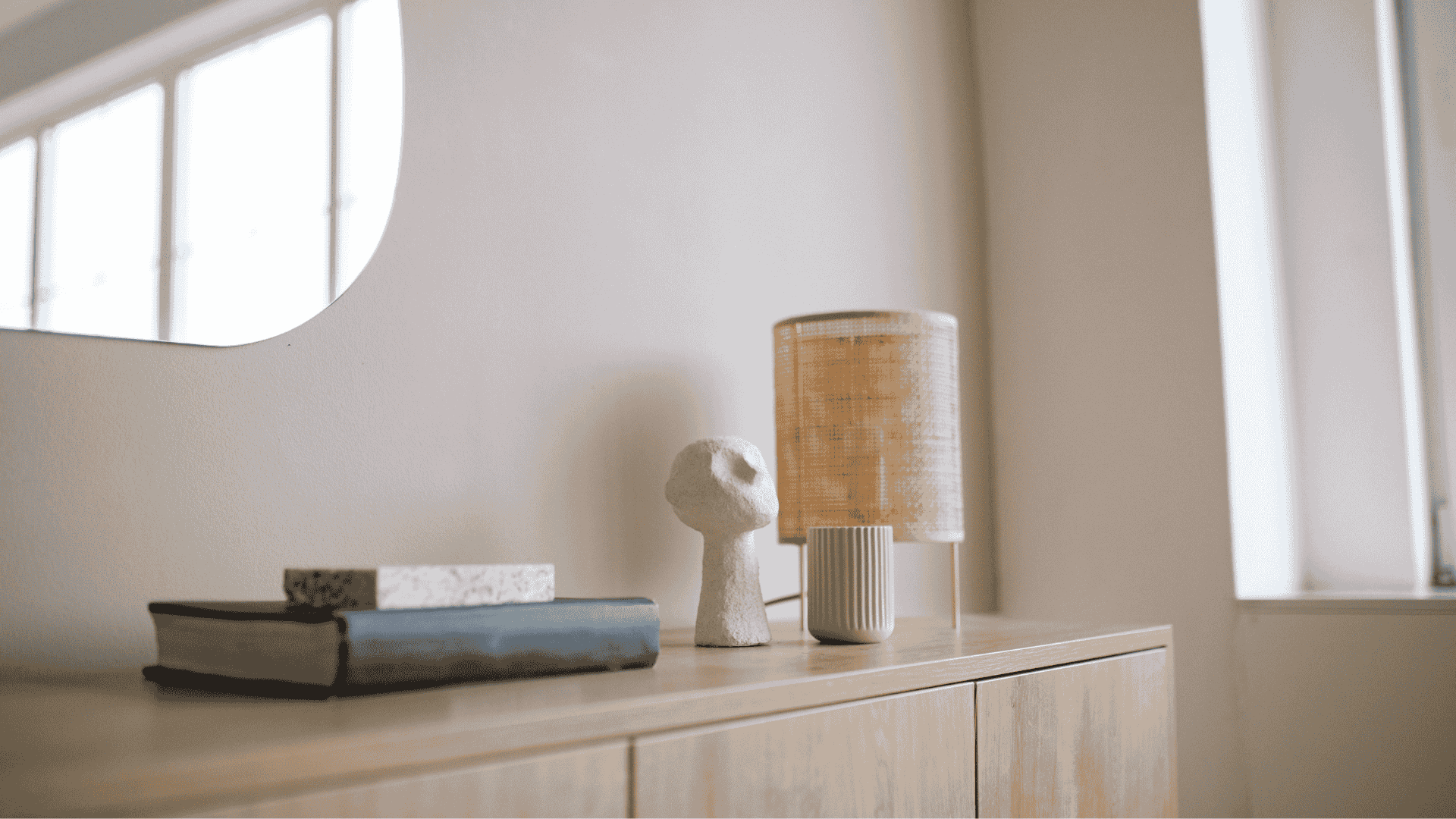

Published in
Featured Greek Businesses
Tagged under

